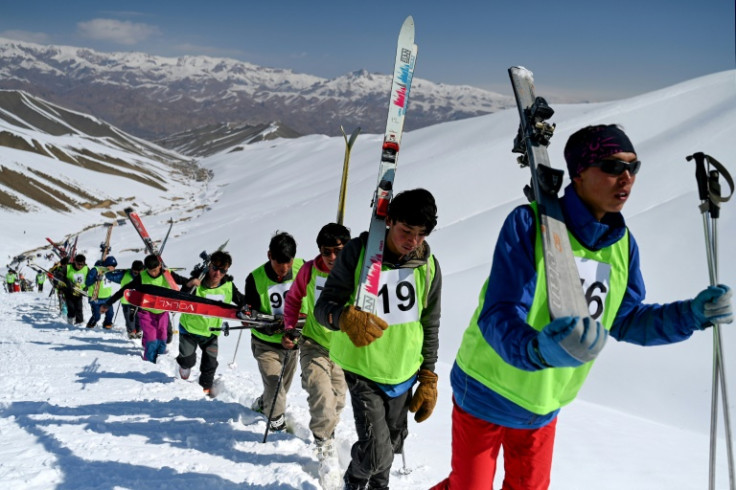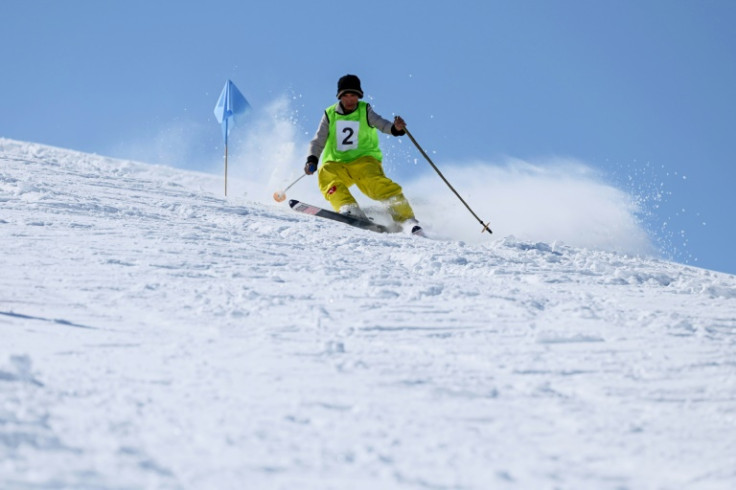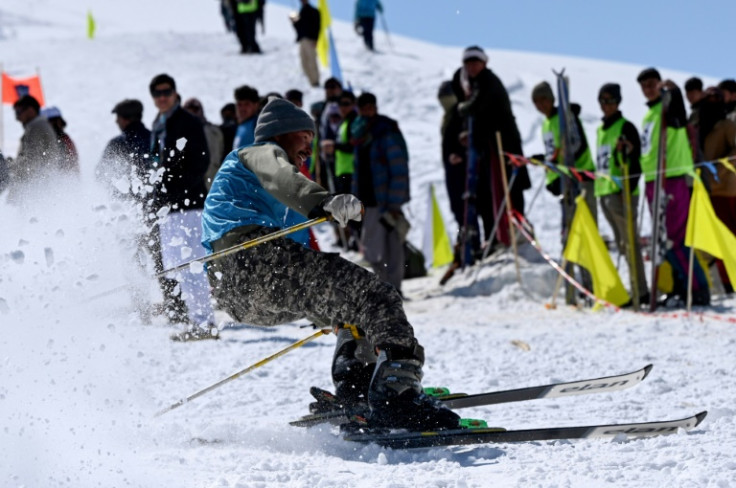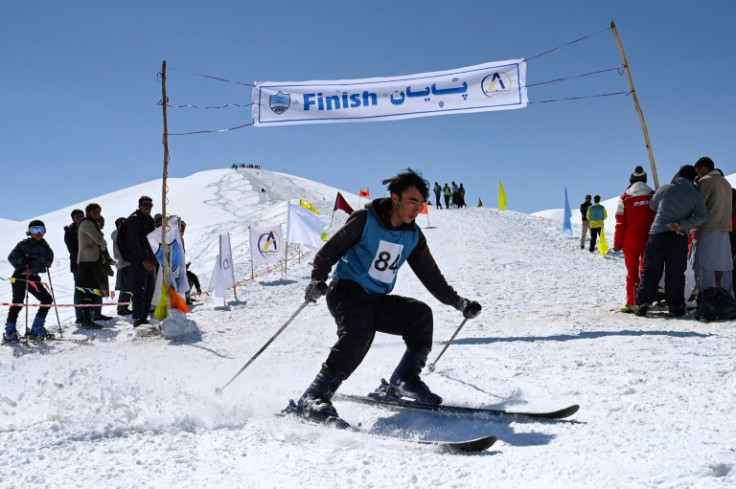
From the edge of a slope in the province of Bamiyan, rivals cheer as they take turns to race down the mountainside, united in keeping skiing alive in Afghanistan.
While it is home to spectacular mountain ranges, including the mighty Hindu Kush, the country does not have a widespread culture of skiing, with gear also costly and scarce.
That has not, however, stopped the growth of a thriving ski cohort, which is eager to keep developing the sport in Afghanistan, despite the loss of sponsors and prominent skiers who left the country after the Taliban takeover in 2021.
"Ski races have lost a bit of their colour" in Afghanistan since the Taliban authorities returned to power, said 23-year-old Esmatullah Haidari, who captains a local ski team.
But, he added, "there are still enthusiastic skiers who don't want skiing to fade away".
Shah Agha Rezayee, a trainer and long-time skier, said fans of the sport have "revived the spirit" of skiing.
"We should work for it because it is our motivation, interest and love," said Rezayee, who dreams of seeing Afghan skiing represented at the Olympics.
Today, there are teams in at least six provinces, with hundreds of members, a chunk of whom took to the Bamiyan slopes earlier in March for the federation's first formal race of the season.
Wearing a hodge-podge of warm clothes and neon pinnies, a long line of competitors shouldered their skis as they marched up the Bamiyan piste, which lacked a lift.
A handful of men gathered to watch, joining in spirited applause as each adult and child racer zipped through the finish line.
Women no longer participate since the Taliban authorities effectively banned women from all sports, despite previously making up a large number of skiers in Bamiyan, according to the federation.
"We feel their absence," said Haidari. "Everyone should be free, and should be able to study and to ski, it's not important whether you're a girl or boy," he added.
"We miss our sisters a lot."
Foreign women do not face the same restrictions and visitors have continued to join Afghans on the slopes, including at events organised by the charity-backed Bamyan Alpine Ski Club.
One such event was the well-attended Afghan Peaks Ski Race, which was also sponsored this year by a local TV station.
Tourists with the adventure travel company Untamed Borders brought with them about 130 kilograms (285 pounds) of gear into the country to donate.
Many skiers get by with donated equipment and handmade wooden skis.
"We have a very limited budget for the sport," said Mohammad Daud Kargar, president of the Afghanistan Ski Federation.
"In the past, some organisations cooperated with us but in the previous three years, we haven't received any help."
Nasratullah Nasrat, who learned to ski from YouTube videos, said he hopes to one day ski for Afghanistan, but voiced concern about the "very limited resources" available to skiers.
"Unfortunately, the government is not paying much attention, slopes have not been prepared and recently, there has been less snowfall," the 20-year-old from Wardak province told AFP, citing the late snow arrival this year in the drought-hit country.
Haidari echoed the challenges, but was determined to carry on the baton from two Olympic-hopeful Afghan skiers Sajjad Husaini and Sayed Alishah Farhang, who left the country after the US-backed government collapsed in 2021.
Even "if we don't get resources, we will make wooden skis and we won't let skiing die in Afghanistan, especially in Bamiyan", he said.










